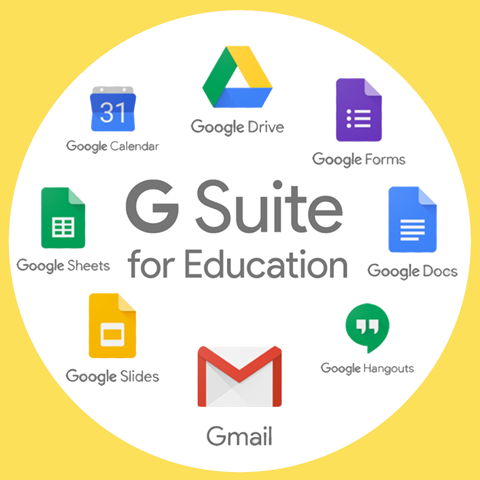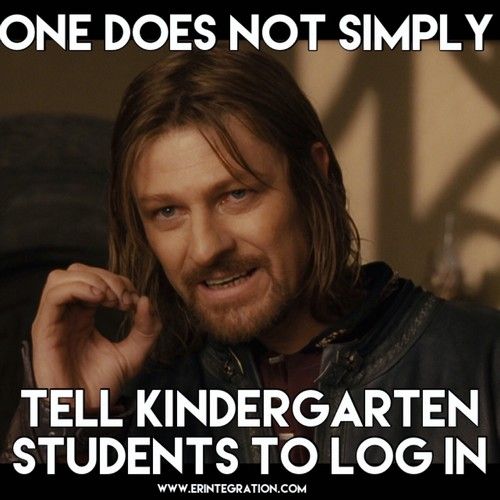This week we looked at the evolution of productivity suites and presentation tools common to education and the workforce. As someone who grew up using Microsoft Suites for everything, then shifting to Apple, now I use Google for most things. For me, it is just what has been made available to me and is the most effective.
 Christina, Greg, and Mandeep, shared an article this week outlining how quickly Google took over productivity suites. They saw a need for a “mission control” dashboard where teachers could more efficiently manage tasks like assigning and correcting homework, freeing teachers to spend more time with students. I am a Google Classroom believer as well.
Christina, Greg, and Mandeep, shared an article this week outlining how quickly Google took over productivity suites. They saw a need for a “mission control” dashboard where teachers could more efficiently manage tasks like assigning and correcting homework, freeing teachers to spend more time with students. I am a Google Classroom believer as well.
Google captured these next-generation users so quickly by outpacing its rivals in both educational product development and marketing.
 Google was able to find a gap in the market and capitalize on it with a product, in my opinion works extremely well, at least for my classroom and school needs. I find the ease of attaching docs, slides, forms, and integration of links and videos a timesaver. I appreciate the ability to quickly comment back and forth with students on progress or corrections useful as well. Students can collaborate on assignments, work on jamboards or presentations, and I can access and look over whenever I feel the need. Overtime, the students have become so comfortable using Google that I know longer need to teach them how to use the software because of the exposure they have had with it before arriving in my classroom. But with all successes, there comes challenges.
Google was able to find a gap in the market and capitalize on it with a product, in my opinion works extremely well, at least for my classroom and school needs. I find the ease of attaching docs, slides, forms, and integration of links and videos a timesaver. I appreciate the ability to quickly comment back and forth with students on progress or corrections useful as well. Students can collaborate on assignments, work on jamboards or presentations, and I can access and look over whenever I feel the need. Overtime, the students have become so comfortable using Google that I know longer need to teach them how to use the software because of the exposure they have had with it before arriving in my classroom. But with all successes, there comes challenges.
At one time, my classroom was 1:1 with Chromebooks. Now we are closer to 1:2, so planning for sharing the technology alters it’s effectiveness. Work time with the Chromebooks is more valuable now, if a student is away for those periods, it can be harder to catch up, especially if they don’t have access to tech or have connectivity issues at home. What once was quite equitable, is not necessarily the case anymore.
The biggest issue arising from last week’s discussion I found to be the ownership and privacy issues with these educational technologies. What is the data being used for and who has access to it? I know we have accounts through our division with Google, so that is one of the reasons I choose to use it for my students. The other conversational point I found interesting was what Google is receiving for creating these services. Besides monetary compensations, am I pushing my students down a road of becoming lifelong Google users? Or am I teaching them technical skills they can transfer to other productivity suites in the future?
Scott Widman references technology as being a minefield. In the classroom, these productivity suites have endless opportunities to help support student learning, and exceptional differentiation opportunities for all students. At the same time, they can provide the opportunities for disengagement and distraction just as fast. The future of productivity suites is only going to continue to grow. I just hope the programs I use with my students continue to be more beneficial to their learning, and allow them to understand the balance of technology use in their day-to-day lives.

Your post talks about how you’ve seen a shift from using Microsoft to Apple to now primarily using Google for your classroom needs. You believe Google Classroom is effective for managing tasks and interacting with students. However, you’ve noticed challenges like less access to Chromebooks for students and concerns about privacy and student dependence on Google. You mention the benefits and drawbacks of using these productivity tools in the classroom and hope they continue to benefit student learning while teaching them about responsible tech use.good job.
Thanks for the comment Navneet. Yes, teaching responsible tech use is a large piece to this. If students can handle the productivity suites correctly, they can have incredible impact on their learning.